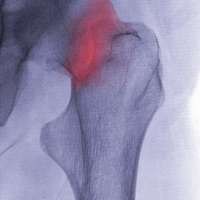Study offers new hope for treatment of osteoporosis

An international study by The University of Western Australia may lead to a new treatment for osteoporosis caused by age-related bone loss in elderly women.
Osteoporosis is a common disease which makes bones become brittle and leads to a higher risk of breaks than in normal bone. It affects more than one million Australians and is known as the silent disease, because you rarely know you have it until you actually break a bone.
It occurs when bones lose minerals, such as calcium, more quickly than the body can replace them, causing a loss of bone thickness.
The new research, published in Nature Communications, found a new way that cells involved in bone structure were able to talk to each other.
Professor Jiake Xu from UWA's School of Pathology and Laboratory Medicine said researchers focused on two types of cells, bone-resorbing osteoclasts which break down bone and bone-forming osteoblasts that regularly cross-talk within the body.
"Bone remodelling is regulated by these two types of cells that communicate with each other in several ways," he said.
"One classic way that they do this is by making a protein, then secreting it and binding it to the receptor of another cell, or through cell-to-cell contact."
Professor Xu said the new research found that osteoclasts could also produce, small sac-like structures containing MicroRNAs, or information, that could communicate with other cells.
"We've discovered the osteoclasts can send a message to osteoblasts about inhibiting bone growth, so if we could find a way to manipulate this to instead promote bone growth it could lead to new treatments for osteoporosis," he said.
















